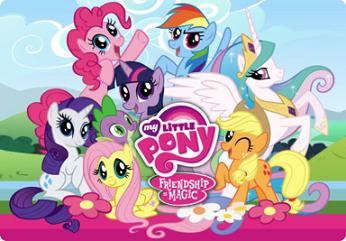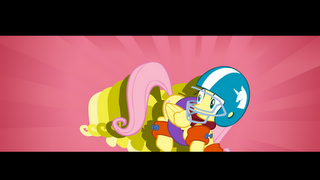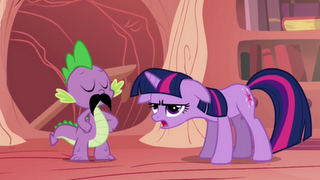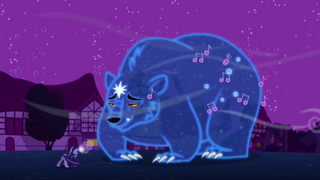We were a little surprised when Olivia Cottrell first asked to write a review of the new My Little Pony series. After all, she’s not exactly the girly-girl type. But then, from the sound of it, neither is the series…
When you hear ‘My Little Pony’, what springs to mind? Chances are you’ll think of the pastel, plastic doe-eyed monstrosities that were advertised with an equally vapid cartoon- strictly the territory of little girls, and not particularly discerning ones at that. However, if you’ve spent a little time on the Internet recently, you might have noticed the growing popularity of a modern version of the cartoon. Entitled My Little Pony: Friendship is Magic, this new series has enchanted a new demographic of 18-35 year old males (among others) and consequently taken the Internet by storm. Fan art, fan fiction and pony-dedicated websites abound in every corner of the web. So what has made this show so popular? Has the Internet finally gone mad? And what on earth is a Sonic Rainboom?
The simplest reason for Friendship is Magic’s massive rise in popularity is this: it is, without a doubt, one of the best cartoons since the heady days of Avatar: The Last Airbender. Its creator, Lauren Faust, previously worked on The Powerpuff Girls and Foster’s Home for Imaginary Friends as writer and director, and both shows’ clever, tongue-in-cheek writing and refusal to talk down to their audience are strongly in evidence here.
Each of the main cast is well characterised with both good and bad qualities and is capable of displaying surprising inner strength. The painfully shy pegasus Fluttershy, for example, learns to put aside her inhibitions and spring into action to protect her friends, while the ladylike unicorn Rarity shows herself to be just as capable in dangerous situations as the more tomboyish Rainbow Dash and Applejack, although in her own inimitable style. Meanwhile, Twilight Sparkle, nominally the ‘main’ character, enjoys being bookish but also fills the role of leader and planner, and the hyperactive Pinkie Pie is a great example of how to write a silly character without making them annoying.
Because of this attention to characterisation, the interaction between the main six is entertaining to watch and leads to lively, interesting episodes as Twilight Sparkle learns about ‘the magic of friendship’ (which, by the way, is literal magic capable of blasting people with rainbows). While later episodes are not quite as exciting as the Sailor Moon-esque battle against evil in the opening two-parter, ‘Mare in the Moon’/’Elements of Harmony’, preferring to focus on everyday events so that episodes can be aired out of order, life in Ponyville, the main setting, is usually far from boring.
The excellent writing is supported by the show’s great use of Flash animation, with bold colours, simple shapes and heavy linework combining to give the show a colourful and attractive look that is strongly reminiscent of The Powerpuff Girls. Pony designs are varied and interesting across all three types (Pegasus, Unicorn and Earth Pony), and each character has a distinct, appealing look. The backgrounds are often very beautiful, with locations such as the ponies’ capital of Canterlot deliberately recalling famous fantasy cities like Minas Tirith. Other nods to different films and TV shows can be seen throughout the show, from Monty Python to Cinderella (Twilight Sparkle turning mice into horses via unicorn magic is not well received, for obvious reasons).
Celebrity ponies based on everyone from Karl Lagerfeld to Andre Agassi also make an appearance, and, in a detail I know will appeal to Impossible Podcast readers, one background pony has a messy brown mane and hourglass symbol on his flank. The fandom has subsequently dubbed him ‘Doctor Whooves’. The show’s fun, original aesthetic even penetrates its advertising, with ‘Equestria Girls’ (a parody of Katy Perry’s ‘California Girls’) being a particularly hilarious example, containing a shout out to the fandom by referring to ‘bronies’, the name that male fans of the show have adopted.
Overall, Friendship is Magic is simply straightforward, uncomplicated fun in a way that few cartoons can manage. Sitting down to watch a few episodes is like eating popcorn- you can never stop with just one but inevitably get sucked into a bright, fun world with interesting characters and great stories. With the new season airing in America on September the 17th, there’s never been a better time to acquaint yourself with the world of Equestria.
My Little Pony: Friendship is Magic airs on Boomerang in the UK.




